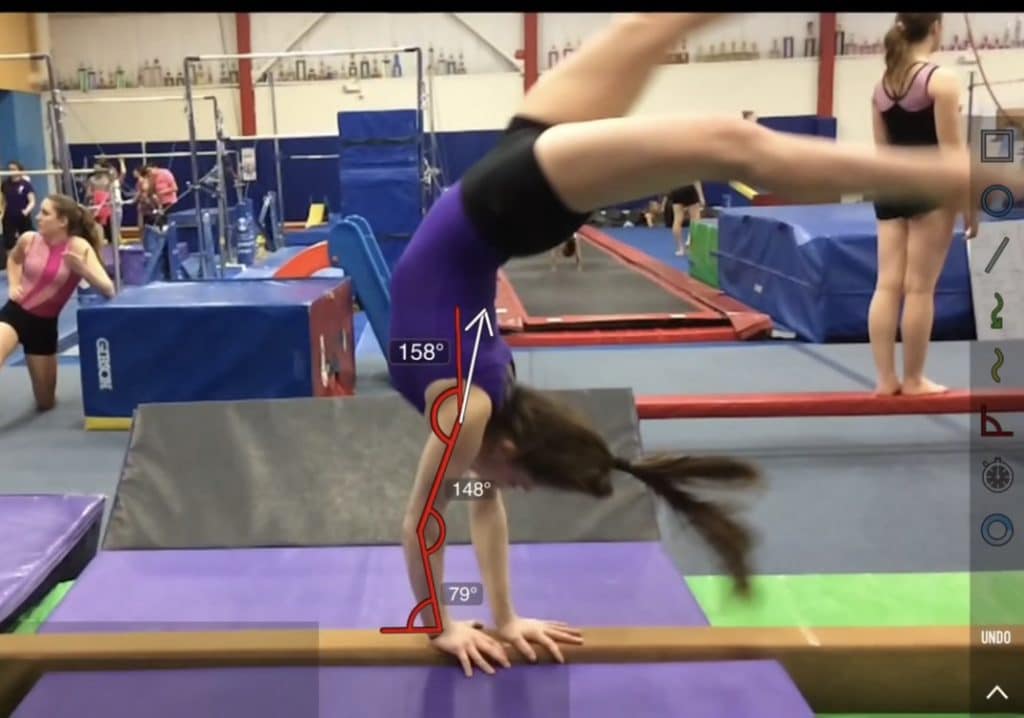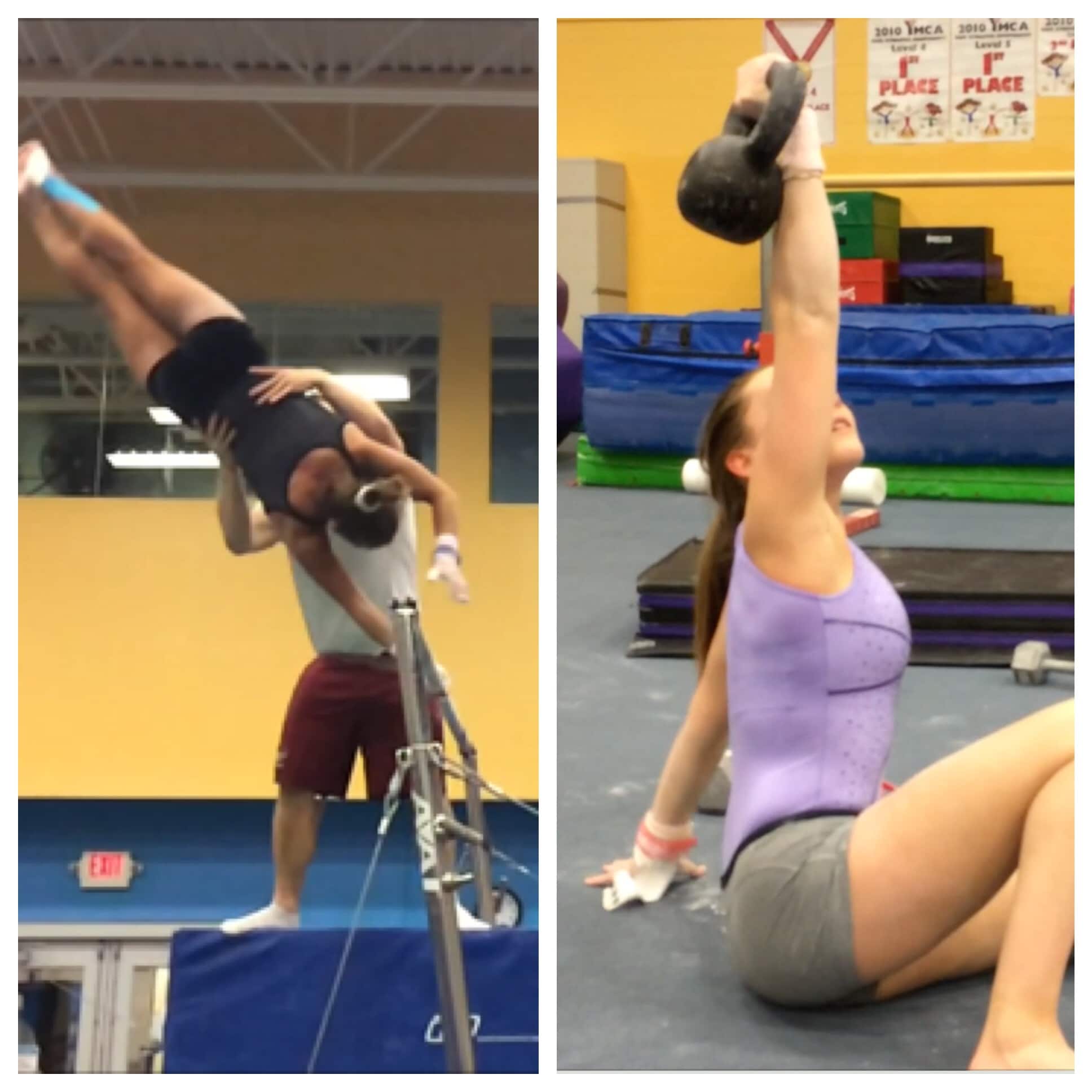Understanding and Combatting the Elbow Injury Epidemic In Gymnastics (Part 1)
Over the last few years of treating a large amount of gymnastics patients, elbow injuries have consistently ranked in the top five most common issues athletes come in with. A few of them have been more traumatic, accident based problems (fell onto an outstretched arm, accidently peeled off bars, etc). These injuries are usually elbow fractures, dislocations, or UCL tears which are unfortunately many times just part of the risk associated with gymnastics.

What has been very interesting to me is that about 80% of all the elbow injuries I have treated were overuse based, falling into the “repetitive microtrauma” category. That term simply means that the elbow joint takes a bit more than it can handle, doesn’t fully recover between flare ups, and slowly starts to break down over time.
I’m going to dig into a lot of information, but if you want to learn about everything I think about on gymnastics injuries remember you can get my entire free ebook on this here,

Table of Contents
The Gymnastics Medical Injuries Guide
- Understand the most common injuries in male and female gymnastics, why they occur, and how to prevent them
- Read about the most current science on injuries and rehabilitation in gymnastics
- Get tips on the latest injury risk reduction and rehabilitation practices
We take our privacy seriously and will never share your information. Click here to read our full privacy policy.
These injuries are usually what’s known as Osteochondritis Dessicans (OCD), growth plate stress fractures, and triceps apophysitis. They tend to lead to huge problems from time away from training, to surgery, and some times gymnasts chosing to quit gymnastics.
OCD Lesion – (Kajiyama et al 2017)

Given how tough some of these injuries can be for gymnasts, I have spent a ton of time reading research on these elbow issues in gymnastics. In digging through the science on this topic, I have found a lot of information on diagnosing/imaging of the injury site, as well as the main treatment options after the injury occurs (usually 3-6 months rest vs surgery).
What I have not unfortunately found, are mechanisms specific to gymnastics on why we have such an insanely high rate of elbow injuries in gymnastics to begin with, or how to prevent them. I’ve talked with elbow surgeons as well as high-level coaches, and I think we have some ideas as a framework. However think we have to dig a little deeper into these issues by applying the latest research, as well as discuss how it links to some cultural components in our sport. We also need to translate the medical jargon into what we can practically do in during gymnastics training and the clinic to make a practical difference.
These injuries can be devastating, with treatments ranging from less severe injuries needing a mandatory 3-6 months of not using the elbow, to much more serious injuries needing surgery and a year off from training due to significant cartilage damage. Not to mention, the effects on a young gymnasts quality of life after gymnastics are potentially even larger.
I won’t dive too much into the really nerdy biomechanical/medical concepts, but I will include links to research papers below for those interested. If you aren’t into the nerdy stuff, just skip this section.
- Biomechanical Characteristics of Osteochondral Defects of the Humeral Capitellum (2013)
- Osteochondritis Dessicans of the Elbow (2016)
- Articular Shear Injuries of the Capitellum in Adolescents (2016)
- Osteochondritis Dessicans of the Capitellum in Adolescents (2016)
- Magnetic Resonance Imaging Staging to Evaluate Stability of Capitellar Osteochondritis Dessicans Lesions (2014)
- Conservative Treatment for Osteochondrosis of the Humeral Capitellum (2008)
- Osteochondritis Dessicans of the Humeral Capitellum in Young Athletes (2017)
- Prevalence of Capitellar Osteochondrosis Dessicans in Children with Chronic Radial Head Subluxation and Dislocation (2016)
- Posterolateral Rotary Instability of the Elbow (2016)
- Upper Extremity Injuries in Gymnasts (2017)
- Comparative Study of Elbow Disorders in Young High-Performance GymnastsImpact Shoulder Angles Correlate with Impact Wrist Angles in Standing Back Handsprings (2015)
I have come up with a handful of ideas behind why these elbow issues occur and how to combat them. My thoughts come from combining the research I have read, my experiences treating gymnasts with a range of elbow injuries, and coaching concepts from training. I have also chosen to break this large article up into 3 chunks, so that I can do it better justice and not make it so monstrous to read. In this post, I want to share 8 key factors I feel are crucial for everyone in gymnastics to understand. Here are the first 3,
1. Remember That Elbows are Not Knees
This one may seem really blunt and obvious, but I think it’s really overlooked in gymnastics. We have to remember that our arms do not have 1/10th of the mileage our legs have over thousands of years of evolution. Inherently our wrists, elbows, and shoulders are not made to bear weight like gymnastics requires. As a result, they do not have the same weight bearing structures that our legs do (thicker bones, cartilage, shock absorbing surfaces).

![]()
Obviously, we can not do much about this, but it is important to know. This idea requires gymnastics coaches and medical providers to be meticulous in making sure a gymnast is properly prepared for high force skills seen in the upper levels of gymnastics. This relates to physical preparation, technical preparation, and keeping a close eye on training volume over many years in a “long term athletic development” mindset. Which leads to number 2.
2. Avoid Sudden Spikes in Training Volume
There has been some fantastic research surfacing on training load and overuse injury risk in sports (find more research here, here, here, and here). Definitely carve time out to read through it all, but in short what a lot of it suggests is that sudden increases in training volume over a short amount of time can really put someone at risk for injury and decreased performance. Tim Gabbett’s work discusses how both too little preparation (not physically / technically for skill as mentioned above) as well as too much workload can be an issue. This makes sense when you step back and consider gymnastics. We all intuitively know gymnasts need to do a lot of strength, basic shaping, and drills to handle certain skills. This is the “too little preparation” side.

But we also have to consider the opposite. I would guess ninety percent of the skills in gymnastics place on the elbow in some fashion through either compressive or traction forces. As a coach, I totally understand the well-intentioned desire of coaches to want to do a lot of skills/drills to help gymnasts reach their potential. That being said, as a medical provider who sees the serious elbow issues that come up, we have to be really careful about finding the optimal dose.

Too little, and we know that the body will never adapt to handle it. Too much in a short amount of time, and then we have someone’s elbow getting really cranky. Having set numbers of vaults or beam series for gymnasts to not exceed will help track volume better. Rotating event focuses to not do all elbow impact is also a useful strategy. This combined with more formal strength programs (more in Part 2) and flexibility training can be huge. Hopefully down the road we will get better objective research on these concepts to apply in training.
.
3. Be Aware of Gymnastics Development – Talent Crossroad Points
This is a newer concept that applies more generally to gymnastics, and not just to elbow injuries. Gymnastics has changed significantly in the last 10 years. Now more than ever, gymnasts are doing much harder skills, at a younger age, at a higher volume throughout the year. The desire to achieve very high levels at a young age, combined with the issue of colleges recruiting at a very young age (a separate discussion for another time) have created quite the perfect storm for overuse injuries to stack up. It’s also a perfect storm for overtraining, burnout, and many talented young gymnasts who unfortunately quit the sport early.
It is now very common see very young, talented male and female gymnasts tearing through lower compulsory levels to be training level 9, 10, and elite at 12-14 years old. Although it’s an important topic related to the morality of subjecting such young gymnasts to that level of training, I want people to just consider the huge crossroads gymnasts face here.
This creates a situation where we have
- The most at risk age group of rapidly developing skeletal systems (8-12 females, 10-14 males)
- Making significant jumps in the amount of force each skill puts on the body (think force jump of kip cast handstands, vs giants, vs blind fulls, vs Jeagers, etc)
- Also making significant jumps in the amount of time they spent training in gymnastics (4x/week at 12 hours total vs 6x/week at 20-25 hours)
- While often times going through large body changes, and not being at their full peak potential strength capacity
Again, this is absolutely not meant to spook people into stopping gymnastics. It’s to illustrate an important point. I have come to call this the “Gymnastics – Talent Crossroads”, where gymnasts are commonly jumping in level during their most at-risk years.
I also openly admit I have not coached a nationally ranked or elite level gymnast. That being said I am fortunate to consult with coaches who do, and have treated quite a few high level gymnasts, and the principle still remains true.
Not monitoring and managing a young gymnast properly can quite quickly lead to the overuse elbow, knee, ankle, and spine issues that plague gymnastics. On the other hand, if we approach this time frame carefully, we may be able to guide a gymnast through their most risk years and in turn get multiple years in return down the road.
Want to Learn More?
I have a ton of more information coming in the next parts of this article series, but if you are interested in learning more about gymnastics specific strength and injury prevention, be sure to check out my new free online PDF guide for Gymnastics Pre-Hab.
Download My New Free
10 Minute Gymnastics Flexibility Circuits

- 4 full hip and shoulder circuits in PDF
- Front splits, straddle splits, handstands and pommel horse/parallel bar flexibility
- Downloadable checklists to use at practice
- Exercise videos for every drill included
.![]()
All for Part 1
At the risk of not making this too long, I am going to hold it there for this week. In Part 2 and Part 3 I will touch more specifically on shoulder/wrist flexibility, hyper extended elbows, skill technique, and strength training. I know the concepts above seem a bit more general and hard to make fast changes, but I feel they are the larger umbrella issues gymnastics is faced with. For now, I hope this was helpful. Best of luck!
– Dave Tilley DPT, SCS
CEO/Founder of SHIFT Movement Science and Gymnastics Education







